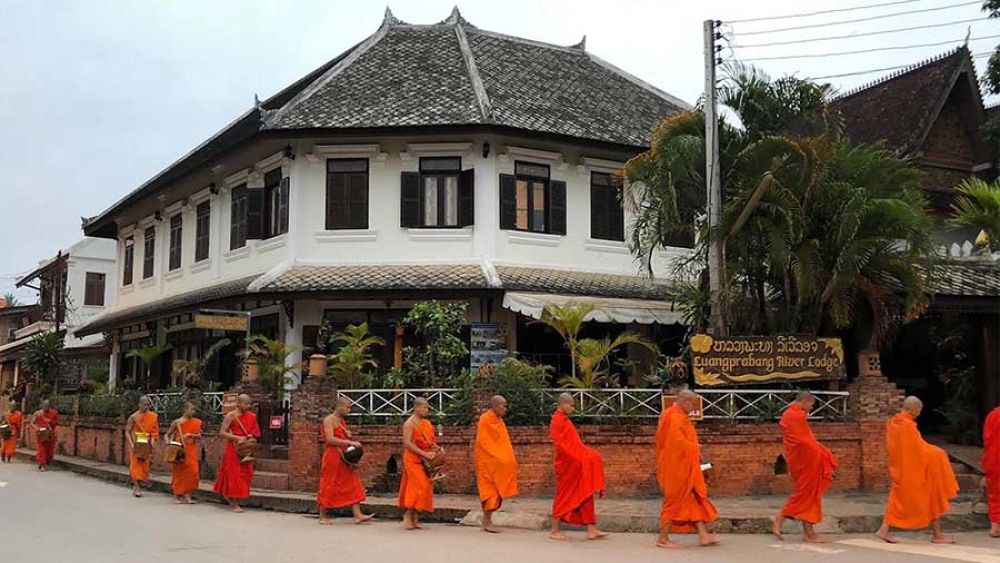

The ancient town of Luang Prabang, a UNESCO World Heritage Site since 1995, holds a special place in the history of Lao tourism. Nestled in the mountainous region of northern Laos, Luang Prabang is highly esteemed for its well-preserved architectural, religious, and cultural heritage. Among these, the Alms Giving Ceremony is one of the most sacred and enduring traditions that continues to attract visitors from around the globe, contributing significantly to the local economy and cultural tourism.
The Alms Giving Ceremony, known locally as 'Tak Bat', is a daily Buddhist tradition deeply rooted in Laotian culture. The ceremony dates back to the 14th century, when Luang Prabang was the capital of the Lan Xang Kingdom, and has been carried on by the town's residents for generations. Through centuries of practice, the ceremony has become an embodiment of the spirituality and devotion of the Lao people, offering insights into the region's unique blend of Theravada Buddhism.
Every morning, as the sun rises over the Mekong River, a solemn procession of orange-robed monks emerges from the temples of Luang Prabang. They walk in silence, collecting alms from local residents and tourists who participate in this act of merit-making. Participants offer food, predominantly sticky rice, as well as other traditional offerings, respecting the monks' meditative silence during the ceremony.
The Alms Giving Ceremony quickly became a focal point for tourists seeking an authentic cultural experience, significantly impacting Luang Prabang's tourism development. The visual spectacle of rows of monks against the backdrop of Luang Prabang's traditional architecture creates a serene and picturesque scene that is much coveted by photographers and culture enthusiasts alike. This influx of visitors has led to increased international recognition, which in turn has fueled the growth of local businesses and the conservation of the town's heritage.
In recent years, sustainable tourism has become an important trend in Luang Prabang. Local authorities and tourism operators are increasingly focused on preserving the integrity of the Alms Giving Ceremony, educating tourists on proper etiquette to minimize the impact on this sacred ritual. Efforts to promote responsible tourism include encouraging visitors to observe the ceremony from a distance, limiting interaction with the monks, and ensuring that any participation is respectful and does not disrupt the solemnity of the occasion.
Despite its popularity, tourism in Luang Prabang, and specifically the Alms Giving Ceremony, faces challenges. The need to balance the economic benefits of tourism with the preservation of the town's spiritual and cultural heritage is paramount. Luang Prabang continues to strive for a sustainable future where tourism works in harmony with local customs and traditions, ensuring that the Alms Giving Ceremony will continue to be a source of spiritual nourishment and wonder for future generations.
For travelers interested in experiencing the Alms Giving Ceremony, it is crucial to approach with sensitivity. Respecting the local customs, dressing modestly, and maintaining a respectful distance contribute to the respectful engagement that is essential for the preservation of this profound cultural event. By embracing responsible tourism practices, visitors can help ensure that the Alms Giving Ceremony remains a timeless tradition in the heart of Laotian culture.